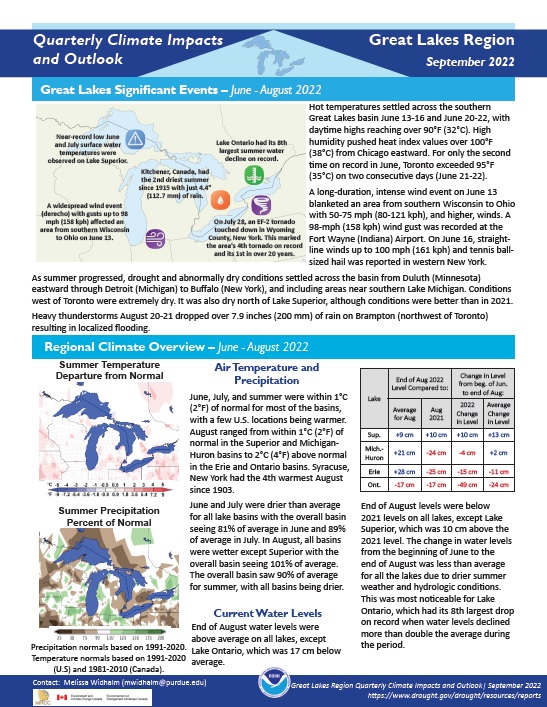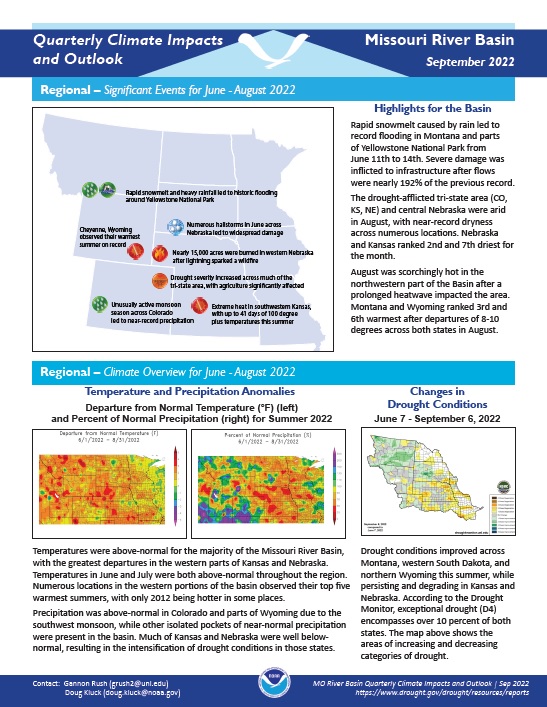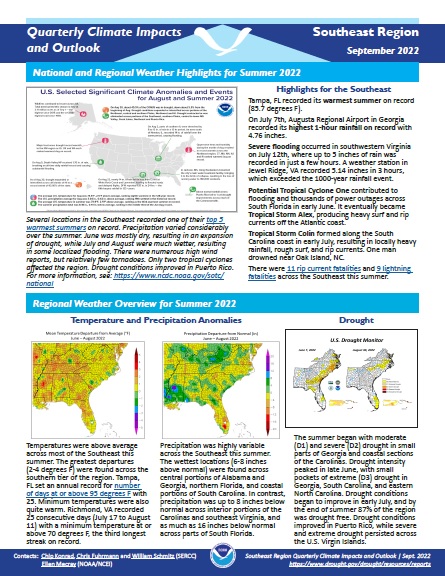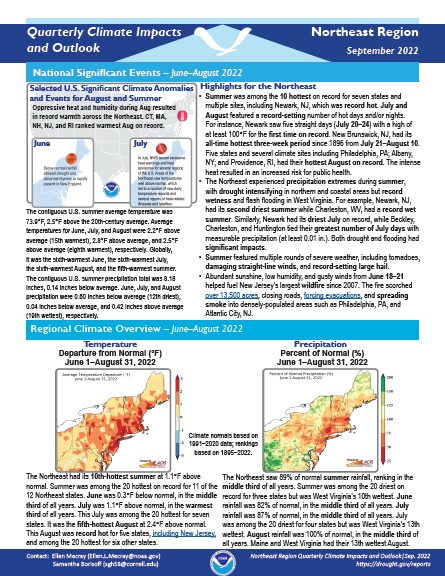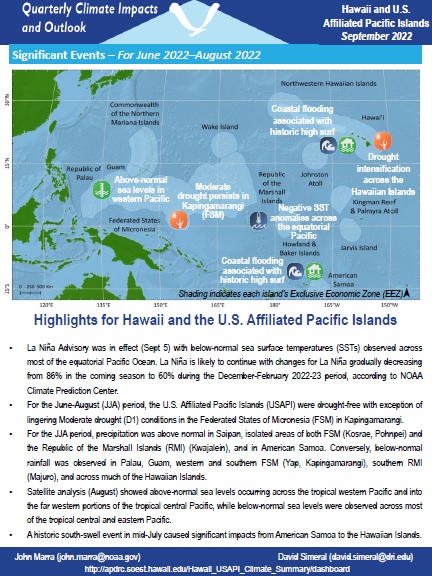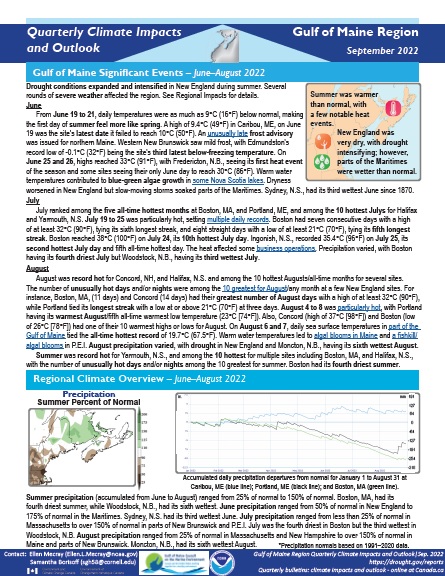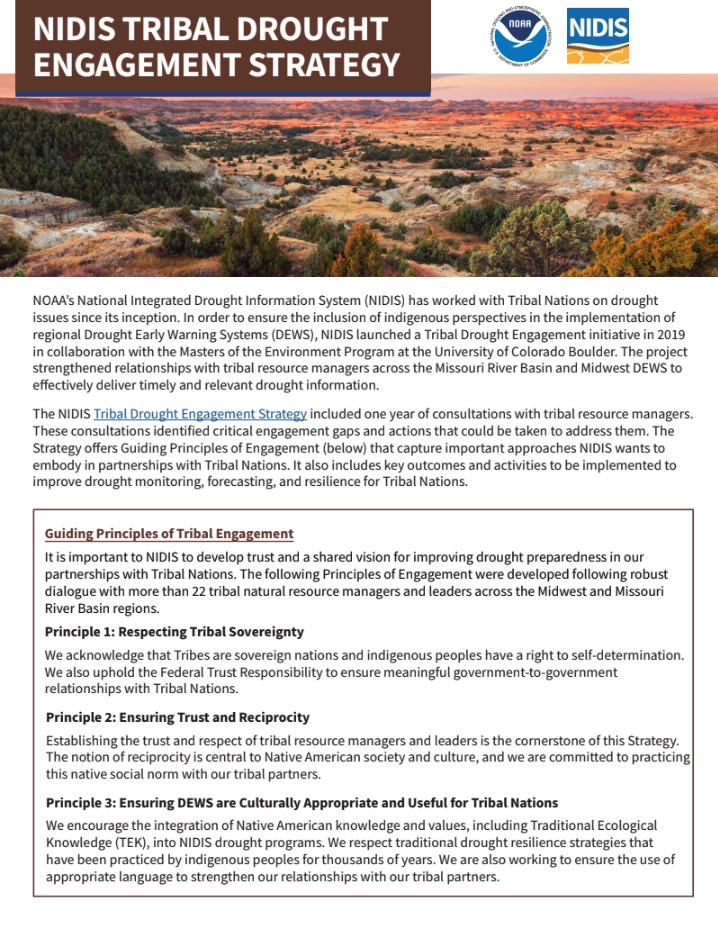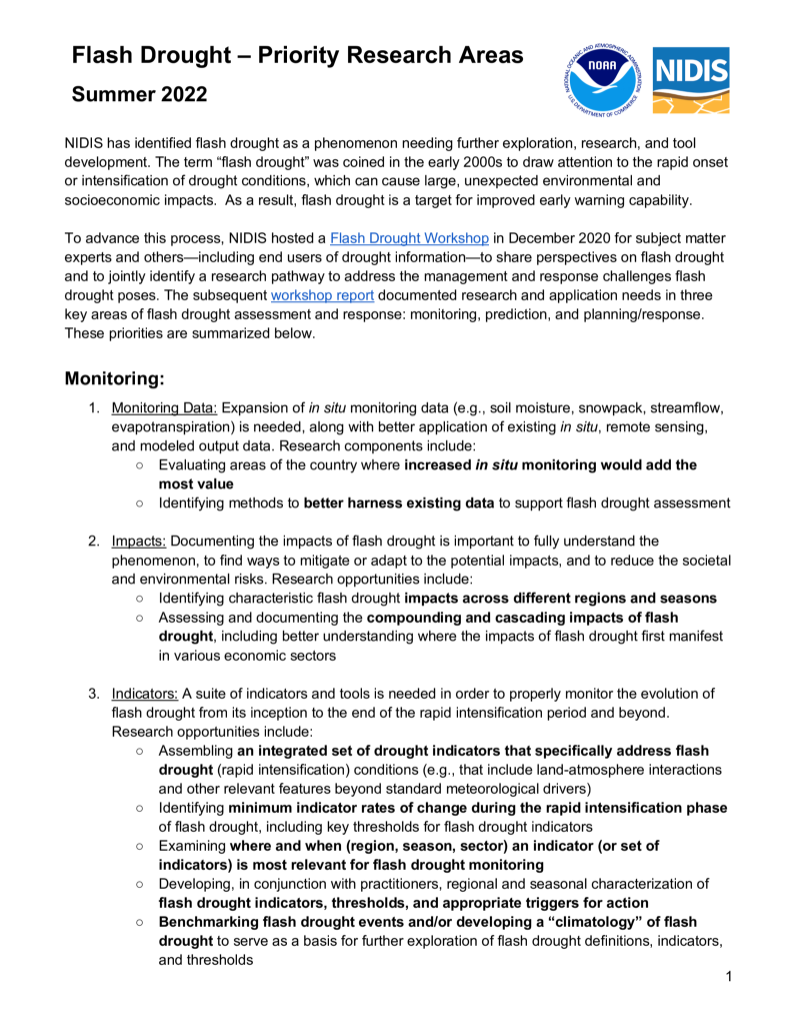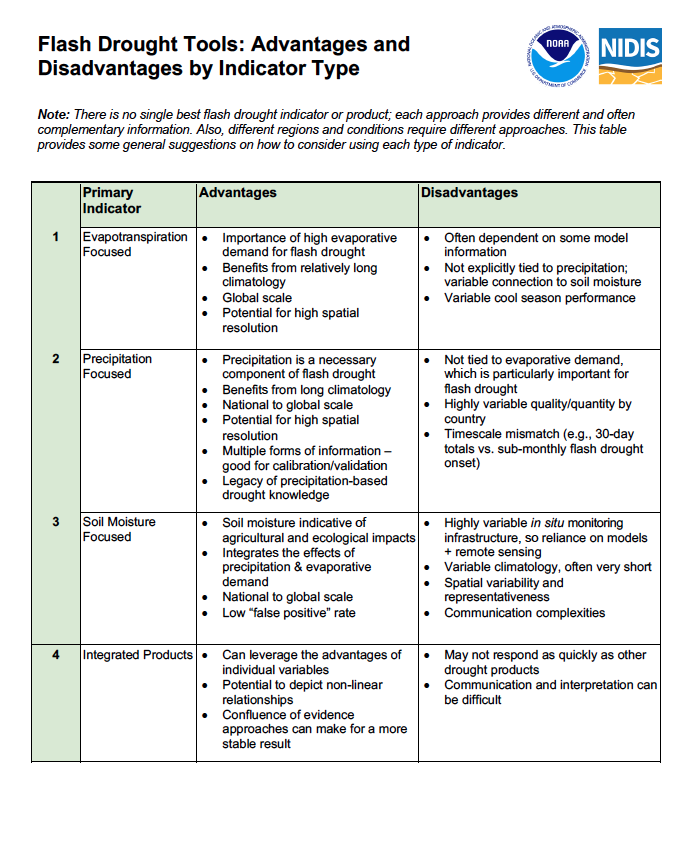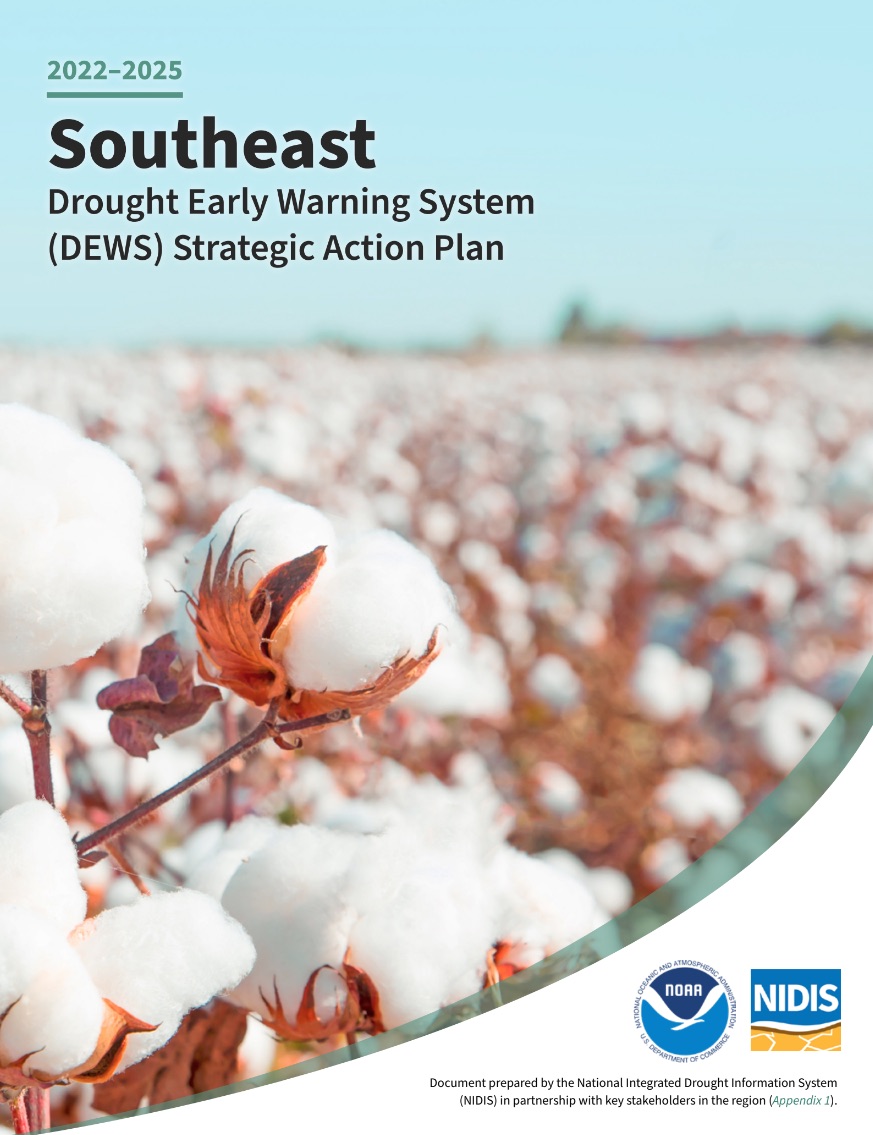For the latest forecasts and critical weather information, visit weather.gov.
Quarterly Climate Impacts and Outlook for the Great Lakes Region for June–August 2022. Dated September 2022.
June, July, and summer were within 1°C (2°F) of normal for most of the basins, with a few U.S. locations that were warmer. The overall basin saw 90% of average precipitation for summer, and all basins were drier than normal.
Quarterly Climate Impacts and Outlook for the Missouri River Basin for June–August 2022. Dated September 2022.
Temperatures were above normal for the majority of the Missouri River Basin, with the greatest departures in the western parts of Kansas and Nebraska. Precipitation was above normal in Colorado and parts of Wyoming due to the Southwest Monsoon, while other isolated pockets of near-normal precipitation were present in the basin. Much of Kansas and Nebraska were well below normal, resulting in the intensification of drought conditions in those states.
Quarterly Climate Impacts and Outlook for the Southeast Region for June–August 2022. Dated September 2022.
Temperatures were above average across most of the Southeast this summer. The greatest departures (2–4 degrees F) were found across the southern tier of the region. Precipitation was highly variable across the Southeast this summer.
Quarterly Climate Impacts and Outlook for the Northeast Region for June–August 2022. Dated September 2022.
The Northeast had its 10th-hottest summer at 1.1°F above normal. Summer was among the 20 hottest on record for 11 of the 12 Northeast states. The Northeast saw 89% of normal summer rainfall, ranking in the middle third of all years. Summer was among the 20 driest on record for three states but was West Virginia's 10th wettest.
Quarterly Climate Impacts and Outlook for the Pacific Region for June–August 2022. Dated September 2022.
For the June–August period, precipitation was above normal in Saipan, isolated areas of both FSM (Kosrae, Pohnpei) and the Republic of the MarshalI Islands (RMI) (Kwajalein), and in American Samoa. Conversely, below-normal rainfall was observed in Palau, Guam, western and southern FSM (Yap, Kapingamarangi), southern RMI (Majuro), and across much of the Hawaiian Islands.
Quarterly Climate Impacts and Outlook for the Gulf of Maine Region for June–August 2022. Dated September 2022.
Summer was up to 2°C (4°F) warmer than normal. It was record hot for Yarmouth, N.S., and among the 10 hottest at multiple sites including Boston, MA. Summer precipitation ranged from 25% of normal to 150% of normal. Boston, MA had its fourth driest summer, while Woodstock, N.B. had its sixth wettest.
NOAA’s National Integrated Drought Information System (NIDIS) has worked with Tribal Nations on drought issues since its inception. In order to ensure the inclusion of indigenous perspectives in the implementation of regional Drought Early Warning Systems (DEWS), NIDIS launched a Tribal Drought Engagement initiative in 2019 in collaboration with the Masters of the Environment Program at the University of Colorado Boulder.
The term “flash drought” was coined in the early 2000s to draw attention to the rapid onset or intensification of drought conditions, which can cause large, unexpected environmental and socioeconomic impacts. More research is needed to better define flash drought, fully capture flash drought impacts, and determine research needs.
The term “flash drought” was coined in the early 2000s to draw attention to the rapid onset or intensification of drought conditions, which can cause large, unexpected environmental and socioeconomic impacts. As a result, flash drought is a target for improved early warning capability.
The purpose of the 2022–2025 Southeast Drought Early Warning System (DEWS) Strategic Action Plan is to clearly articulate jointly identified information needs, set priorities for the DEWS network, and suggest measurable actions to improve drought early warning and preparedness for the region.


